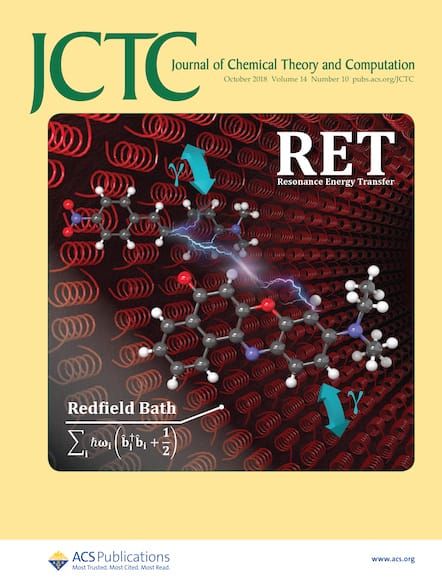本征无序蛋白LCST和UCST液-液相分离的温度依赖粗粒度模型。
IF 5.7
1区 化学
Q2 CHEMISTRY, PHYSICAL
引用次数: 0
摘要
根据溶液条件(温度、pH 值和离子强度)的不同,许多固有无序蛋白(IDPs)在水中会发生液-液相分离(LLPS)。受温度控制的液液相分离有两种类型:高于下临界溶液温度(LCST)的液液相分离和低于上临界溶液温度(UCST)的液液相分离。IDP 粗粒度(CG)模型特别适用于研究支配 LLPS 和超分子结构的物理和化学因素。然而,可同时模拟对温度敏感的 IDP 的 LCST 和 UCST 行为的 CG 模型的开发仍处于起步阶段。在此背景下,我们在此介绍一种基于 MARTINI 3 力场的用于 IDP 模拟的新型温度依赖性(TD)CG 模型。该模型是通过修改无极性或带电溶质珠与水之间的伦纳德-琼斯电位并加入 TD 重定标因子而建立的。该模型被参数化以拟合利用全原子(AA)模拟计算的两个极性分子或两个带电分子之间的平均力(PMF)的 TD 电位。我们的研究表明,TD CG 模型能够再现实验已知的 LCST 和 UCST 低复杂度序列的 LLPS,并估算出与实验测量结果相当的相变温度。本文章由计算机程序翻译,如有差异,请以英文原文为准。
Temperature-Dependent Coarse-Grained Model for Simulations of Intrinsically Disordered Protein LCST and UCST Liquid-Liquid Phase Separations.
Many intrinsically disordered proteins (IDPs) can undergo a liquid-liquid phase separation (LLPS) in water, depending on solution conditions (temperature, pH, and ionic strength). There are two types of LLPS that are controlled by temperature: those occurring above a lower critical solution temperature (LCST) and those occurring below an upper critical solution temperature (UCST). IDP coarse-grained (CG) models are particularly appropriate for investigating the physical and chemical factors that govern their LLPS and supramolecular organization. However, the development of CG models allowing simulations of both LCST and UCST behavior of temperature-sensitive IDPs is still in its infancy. In this context, we present here a novel temperature-dependent (TD) CG model for IDP simulations based on the MARTINI 3 force field. The model was developed by modifying the Lennard-Jones potentials between apolar or charged solute beads and water with a TD rescaling factor. It was parametrized to fit the TD potentials of mean force (PMF) between two apolar or two charged molecules computed using all-atom (AA) simulations. We show that the TD CG model is able to reproduce the experimentally known LLPS of both LCST and UCST low-complexity sequences and to estimate phase transition temperatures comparable to experimental measurements.
求助全文
通过发布文献求助,成功后即可免费获取论文全文。
去求助
来源期刊

Journal of Chemical Theory and Computation
化学-物理:原子、分子和化学物理
CiteScore
9.90
自引率
16.40%
发文量
568
审稿时长
1 months
期刊介绍:
The Journal of Chemical Theory and Computation invites new and original contributions with the understanding that, if accepted, they will not be published elsewhere. Papers reporting new theories, methodology, and/or important applications in quantum electronic structure, molecular dynamics, and statistical mechanics are appropriate for submission to this Journal. Specific topics include advances in or applications of ab initio quantum mechanics, density functional theory, design and properties of new materials, surface science, Monte Carlo simulations, solvation models, QM/MM calculations, biomolecular structure prediction, and molecular dynamics in the broadest sense including gas-phase dynamics, ab initio dynamics, biomolecular dynamics, and protein folding. The Journal does not consider papers that are straightforward applications of known methods including DFT and molecular dynamics. The Journal favors submissions that include advances in theory or methodology with applications to compelling problems.
 求助内容:
求助内容: 应助结果提醒方式:
应助结果提醒方式:


